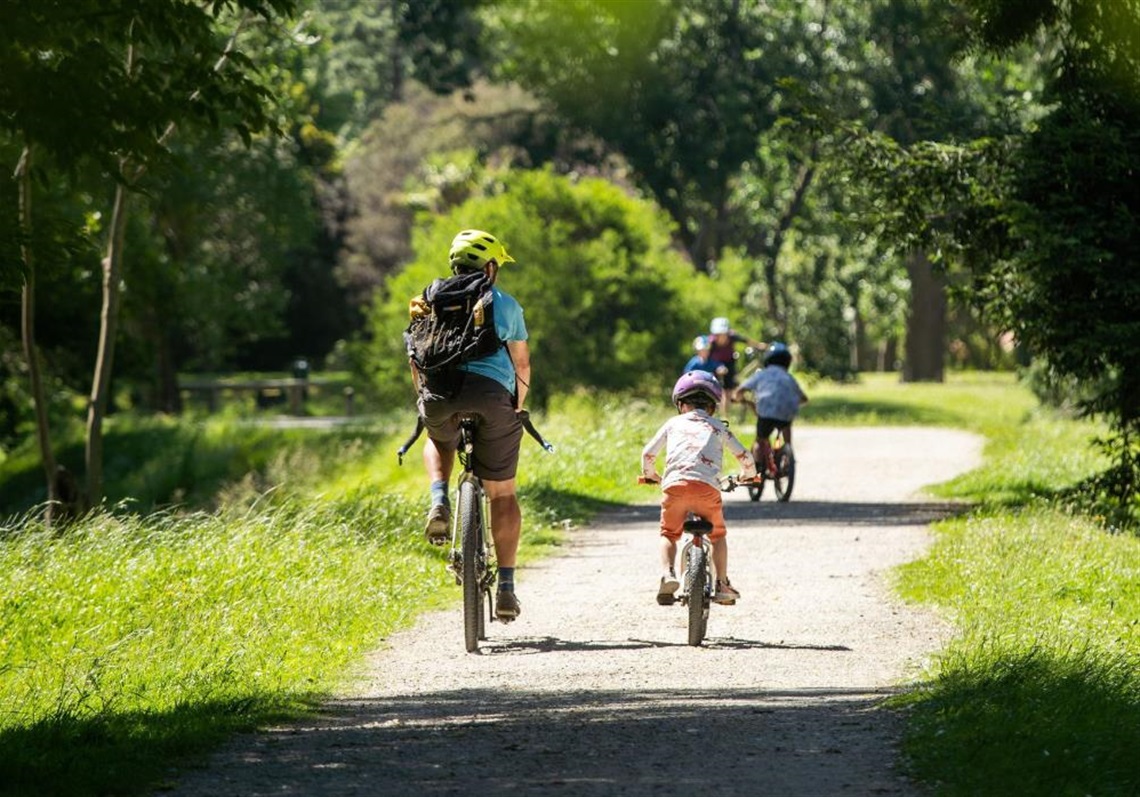
The council is reviewing its strategy for its many open spaces, sports, recreation and play activities in the district.
We have now completed a draft Open Space and Physical Activity Strategy(PDF, 12MB).
Your feedback will help us finalise the document and firm up some activities for a detailed Action Plan that will be developed after consultation on the draft strategy.
The current Parks and Open Spaces Strategy 2008 was designed to reflect actual community growth and need through to 2017. Since the strategy was first developed, significant changes have taken place including population growth and demographic diversity, shifts in legislative and strategic priorities, as well as sport and recreation trends that indicate changes in engagement and participation levels. These changes necessitate an update to the council’s broad vision and direction for open spaces and physical activity so that they are informed by the current issues and interests of the community as well as the collective challenges we presently face.
How we developed the draft strategy
Our engagement with the community last year as well as ongoing discussions with Tangata Whenua and elected members helped us identify and refine some of the key issues and informed the direction of the draft strategy.
We also took into account council’s Leading Edge Strategy, climate change and other strategic priorities, as well as national legislation and initiatives to produce a strategy that better meets the needs and interests of our communities today and in the future.
The key points of the strategy are provided below. More details can be found in the draft strategy(PDF, 12MB).
Key points of the strategy
The strategic vision is to create vibrant places that support healthy communities. This means focusing on ensuring our public open spaces and physical activities support the health and wellbeing of our communities and the environment in a holistic manner.
We have identified 5 goals to help us achieve this.
Goals
Our open spaces and physical activities support the health and wellbeing of all people in the community
| We will do this by |
Example activities |
|
Supporting and enabling a wide range of physical activities and recreational interests in public open spaces.
|
- explore digital opportunities such as E-Sport
- investigate potentials for more river activities
|
|
Supporting healthy consumption in open spaces.
|
- more water fountains
- more healthy food and drink options at kiosks
|
|
Partnerships to provide more sport, recreation and play opportunities.
|
- work with groups, organisations, schools and businesses interested in developing active recreation activities
|
We value and protect our natural environment and biodiversity
| We will do this by |
Example activities |
|
Partnering with Iwi/hapū and community groups to achieve climate change goals.
|
- increase community awareness of climate change impacts and advocate behavioural adjustments
- Work with Iwi/hapū to support the health and wellbeing of the Whanganui River.
|
|
Supporting biodiversity in our open space.
|
- support volunteer planting and maintenance groups
- develop planting species guidelines
|
|
Supporting sustainable energy in our open spaces.
|
- explore opportunities for solar and electric power in our open spaces
|
Our open spaces celebrate Whanganui’s history, heritage and unique identity
| We will do this by |
Example activities |
|
Affirming and sharing heritage values in our open spaces.
|
- identify historic heritage and cultural values in partnership with Tangata Whenua
- explore opportunities for sharing this information using online technologies
|
|
Promoting a sense of place and local identity.
|
- promote the Public Art Fund to encourage creative projects that celebrate the historic heritage of our parks and open spaces
|
Our whole community can experience and enjoy our open spaces, sport, recreation and play activities
| We will do this by |
Example activities |
|
Ensuring safety is a key priority in our open spaces.
|
- build Crime Prevention Through Environmental Design (CPTED) capability to ensure crime and injury prevention principles are embedded in the development of open spaces
- increase sun protection information and provision
|
|
Improving inclusivity and accessibility for all types of users.
|
- establish a Disability User Group to help inform the development of open space and physical activity opportunities
- continue to develop shared pathways for walking, cycling and scootering access
|
Our open spaces meet the needs of local communities now and in the future
| We will do this by |
Example activities |
|
Ensuring all neighbourhoods have appropriate and fair access to open spaces.
|
- conduct a provision analysis of residential properties within a 500m distance from a neighbourhood reserve
|
|
Planning for population growth and change.
|
- develop criteria for open space acquisition informed by community values
|